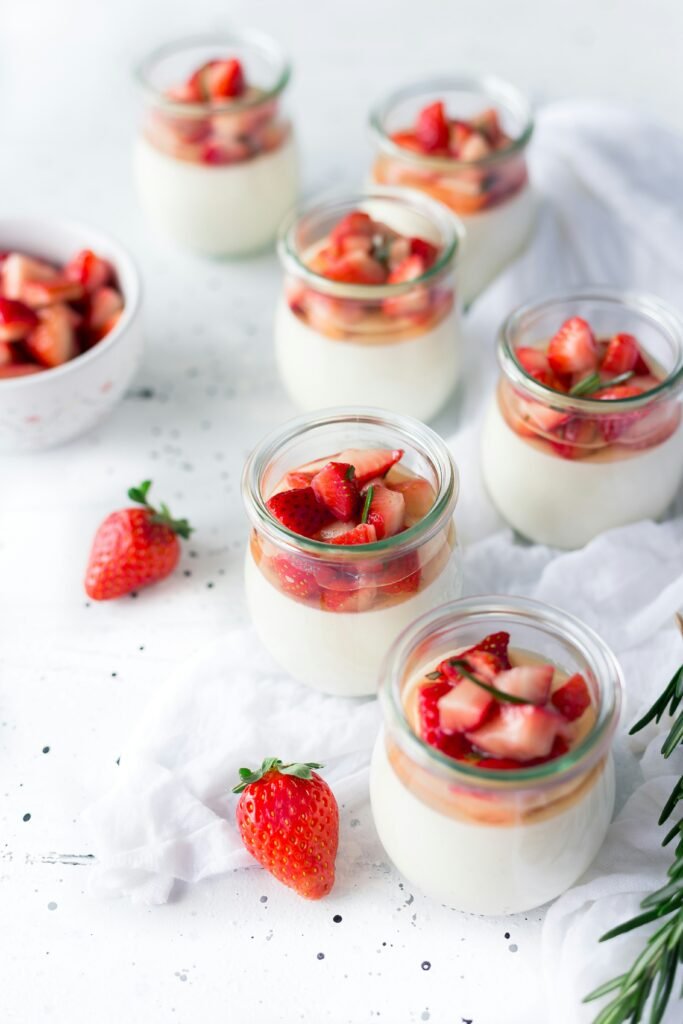Are you tired of finding your leftovers tasting stale and bland? Look no further, because we have the solution for you! In this article, we will guide you on choosing the right airtight seals for long-lasting freshness in your plastic food containers. By implementing the right seals, you can ensure that your food stays as delicious and fresh as the day you made it. So, let’s dive into the world of airtight seals and discover the key to preserving the flavors of your favorite meals.

This image is property of images.unsplash.com.
Types of Airtight Seals
When it comes to preserving the freshness of your food, having an airtight seal on your plastic food containers is essential. There are various types of airtight seals available in the market, each with its own unique features and benefits. Let’s explore the three main types of airtight seals: silicone seals, rubber seals, and plastic seals.
Silicone Seals
Silicone seals are highly popular and widely used in food storage containers. They are known for their excellent sealing properties and durability. Silicone seals have the ability to withstand both high and low temperatures, making them suitable for a wide range of storage needs. Additionally, they are flexible and stretchable, which allows them to create a tight seal even on containers with irregular shapes or sizes.
Rubber Seals
Rubber seals, also known as EPDM (Ethylene Propylene Diene Monomer) rubber seals, are commonly found in plastic food containers. These seals are known for their excellent heat resistance and durability. Rubber seals are able to maintain their elasticity, even after prolonged exposure to heat. This makes them ideal for storing hot and warm foods without compromising the integrity of the seal. However, it’s worth noting that rubber seals may not be as flexible as silicone seals, and may not create a tight seal on containers with irregular shapes.
Plastic Seals
Plastic seals are the most common type of airtight seals found in plastic food containers. These seals are usually made from polyethylene, a type of plastic known for its flexibility and strength. Plastic seals are easy to use and provide a reliable seal on both standard and irregular shaped containers. However, they may not offer the same level of heat resistance as silicone or rubber seals, and may not be suitable for storing hot or warm foods for extended periods of time.
Factors to Consider
When choosing the right airtight seal for your plastic food containers, there are several factors you need to consider. These factors include the container material, container shape and size, and the seal material itself. Let’s take a closer look at each of these factors.
Container Material
The material of your food container plays a crucial role in selecting the appropriate airtight seal. There are two main types of container materials commonly used: plastic and glass.
Plastic Containers
Plastic containers are lightweight, affordable, and come in a wide variety of shapes and sizes. They are versatile and often dishwasher-safe, making them convenient for everyday use. When it comes to choosing an airtight seal for plastic containers, silicone or plastic seals are recommended as they provide a reliable seal and are compatible with most types of food.
Glass Containers
Glass containers are often preferred for their aesthetic appeal and the ability to see the contents inside. They are generally made from borosilicate glass, which is heat-resistant and can withstand high temperatures. When choosing an airtight seal for glass containers, silicone or rubber seals are commonly used due to their ability to withstand both high and low temperatures.
Container Shape and Size
The shape and size of your food container will influence the type of airtight seal you need. There are two main categories to consider: standard shaped containers and irregular shaped containers.
Standard Shaped Containers
Standard shaped containers include square, rectangular, and circular-shaped containers. These containers have straight sides and a regular shape, making it easier to find airtight seals that fit securely. Silicone, rubber, or plastic seals are suitable for standard shaped containers as they can create a tight seal.
Irregular Shaped Containers
Irregular shaped containers include containers with unique shapes or those designed for specific food items. These containers may have curves, angled sides, or compartments. When selecting an airtight seal for irregular shaped containers, silicone seals are highly recommended due to their flexibility and stretchability. Silicone seals can conform to the shape of the container and create a secure airtight seal, even on containers with complex designs.
Seal Material
The material used for the seal itself is an important consideration in choosing the right airtight seal for your plastic food containers. There are several commonly used seal materials, including silicone, EPDM rubber, and polyethylene.
Silicone
Silicone seals are a popular choice due to their excellent sealing properties and durability. They are resistant to high and low temperatures, making them suitable for various types of food storage. Silicone seals are also flexible and stretchable, allowing them to create a tight seal on containers of different shapes and sizes.
EPDM Rubber
EPDM rubber seals are known for their high heat resistance and durability. They are capable of maintaining their elasticity even in extreme heat, making them ideal for storing hot foods. EPDM rubber seals may not be as flexible as silicone seals, so they are typically used in containers with standard shapes.
Polyethylene
Polyethylene seals are commonly found in plastic food containers due to their affordability and availability. They are flexible and easy to use, providing a reliable seal on the containers they are used with. However, polyethylene seals may not offer the same level of heat resistance as silicone or EPDM rubber seals.

This image is property of images.unsplash.com.
Compatibility with Various Foods
When it comes to choosing airtight seals for plastic food containers, it’s important to consider the compatibility with different types of foods. The seal material and design should be capable of providing a secure seal for various food items. Here are some categories of food and their specific storage requirements:
General Food Storage
For general food storage, silicone seals are a great choice. They are versatile, durable, and can create an airtight seal on containers of different sizes and shapes. Silicone seals are compatible with a wide range of food items, including leftovers, snacks, and pantry staples.
Liquid Storage
When storing liquids, such as soups, sauces, or beverages, it’s crucial to select a seal that can prevent leakage. Silicone seals are highly recommended for liquid storage, as they have the ability to create a watertight seal. They can withstand the pressure from liquids and ensure that your containers remain leak-free.
Fruits and Vegetables
To keep your fruits and vegetables fresh, it’s important to choose a seal that can maintain the right level of humidity. Silicone and plastic seals are suitable for storing fruits and vegetables. They can create a tight seal that helps to retain moisture and prevent spoilage.
Flour and Dry Goods
When it comes to storing flour and other dry goods, such as cereals, pasta, or rice, it’s important to keep them protected from moisture and pests. Silicone and plastic seals are recommended for storing these types of food items. They can create a secure seal that keeps moisture out, preventing clumping and maintaining the freshness of your dry goods.
Durability and Longevity
Durability and longevity are important factors to consider when choosing airtight seals for your plastic food containers. The seals should be able to withstand temperature variations, resistance to wear and tear, and maintain their sealing properties over time. Let’s explore some aspects related to durability and longevity.
Heat Resistance
If you frequently store hot or warm food in your plastic containers, it’s essential to choose a seal that can withstand high temperatures. Silicone and EPDM rubber seals are known for their excellent heat resistance. They can maintain their integrity even when exposed to hot foods or when used in the microwave or oven.
Cold Resistance
In addition to heat resistance, it’s important to consider the seal’s ability to withstand low temperatures if you plan to store food in the freezer. Silicone seals are highly recommended for freezer storage as they can maintain their flexibility and sealing properties even in extremely cold temperatures.
Resistance to Wear and Tear
The durability of the seal is also important to ensure long-lasting freshness in your plastic food containers. A high-quality seal should be resistant to wear and tear, allowing it to provide an airtight seal for an extended period of time. Silicone and EPDM rubber seals are known for their durability and can withstand repeated use without losing their sealing properties.

This image is property of images.unsplash.com.
Ease of Cleaning
When it comes to maintaining the cleanliness of your plastic food containers, ease of cleaning is an important factor to consider. The airtight seal should be easy to clean and maintain to prevent the buildup of bacteria or odors. Let’s explore two different cleaning options for airtight seals:
Dishwasher Safe
If you prefer the convenience of dishwasher cleaning, it’s important to choose a seal that is dishwasher safe. Silicone and plastic seals are often dishwasher safe, allowing you to easily clean them along with your plastic food containers. This saves you time and effort in maintaining the cleanliness of your airtight seals.
Hand-Wash Only
Some airtight seals may require hand-washing to maintain their integrity and sealing properties. EPDM rubber seals, for example, may need to be hand-washed to avoid any damage that could occur in a dishwasher. It’s important to carefully follow the manufacturer’s instructions for cleaning and maintenance to ensure the longevity of your airtight seals.
Flexibility and Stretchability
Flexibility and stretchability are important characteristics in airtight seals, especially when dealing with containers of various shapes and sizes. A flexible and stretchable seal can conform to the contours of the container, creating a secure and airtight seal. Let’s explore the two main types of flexibility and stretchability in airtight seals:
Stretchable Seals
Stretchable seals, such as silicone seals, are capable of stretching to accommodate containers with varying sizes and shapes. They can adapt to irregular shaped containers and create a tight seal, minimizing the risk of air or moisture entering the container. Stretchable seals are ideal for those who have a variety of containers with different shapes and sizes.
Flexible Seals
Flexible seals, including silicone and plastic seals, are able to bend and flex without losing their sealing properties. They can conform to the contours of standard shaped containers and ensure a secure seal. Flexible seals are suitable for those who primarily use containers with regular shapes and sizes.
Cost and Availability
Cost and availability are often important factors to consider when choosing airtight seals for your plastic food containers. Depending on your budget and location, certain seals may be more affordable and readily available than others. Let’s explore the two main aspects related to cost and availability:
Affordability
Plastic seals, made from polyethylene, are often the most affordable option. They are readily available and widely used in plastic food containers. Silicone and EPDM rubber seals may be slightly more expensive but are known for their durability and longevity. Consider your budget and choose a seal that offers the right balance between cost and quality.
Availability in the Market
The availability of airtight seals may vary depending on your location and the specific brand or type of seal you are looking for. Silicone and plastic seals are generally easy to find in stores or online. However, if you are looking for specific types or brands of seals, it may be necessary to check with specialty stores or online suppliers.
In conclusion, choosing the right airtight seal for your plastic food containers is crucial for long-lasting freshness. Consider factors such as the container material, shape and size, seal material, compatibility with various foods, durability and longevity, ease of cleaning, flexibility and stretchability, and cost and availability. By taking these factors into account, you can ensure that your food remains fresh and delicious for longer periods of time. So, happy sealing and enjoy the benefits of airtight storage!
